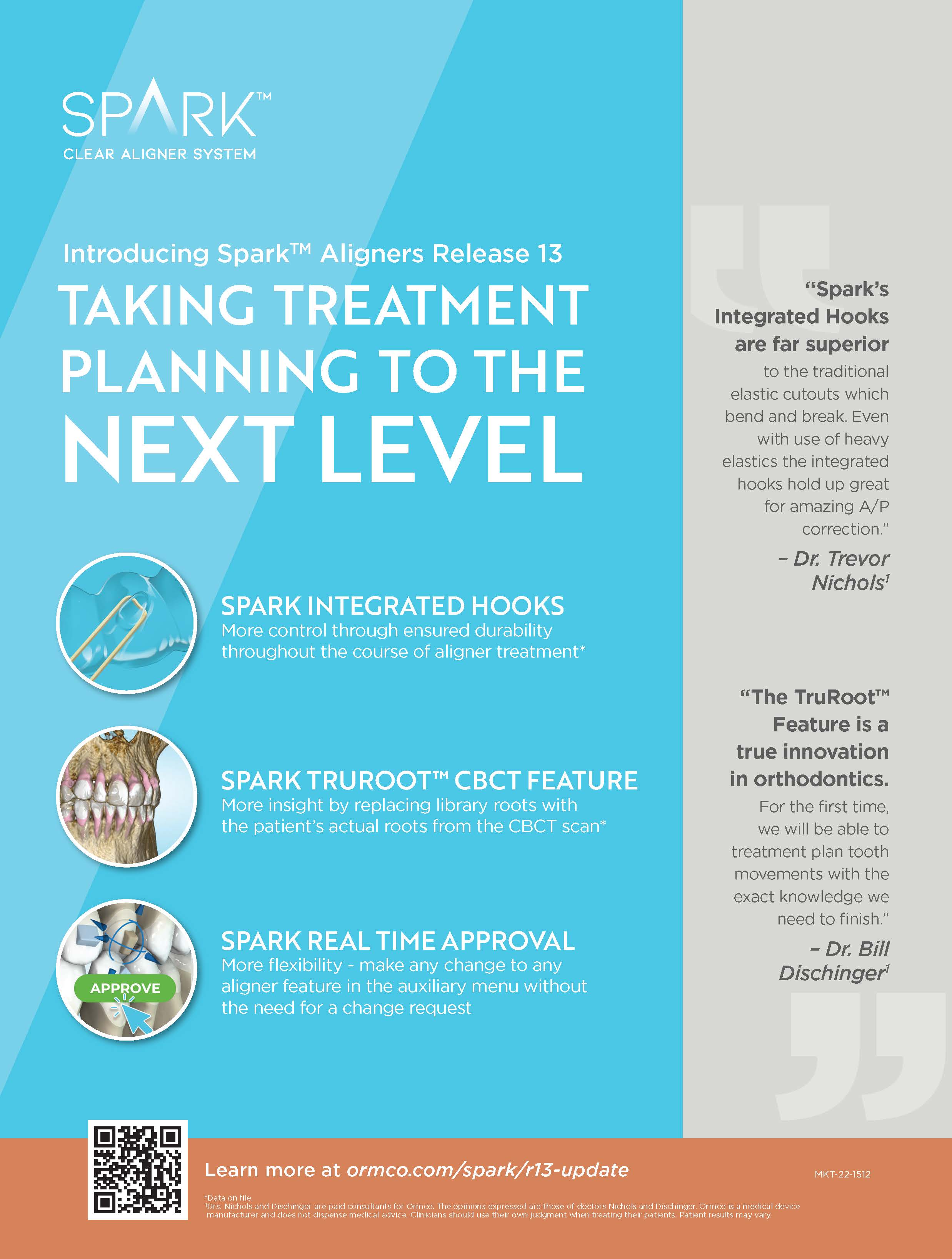Several years ago, I decided to eliminate routine and extensive Phase I treatment from my practice. The primary reason for the change was my observation that these patients underwent longer treatment overall, that their teeth were left with greater scarring (decalcifications, incisor root resorption, and molar ankylosis), and that their parents were frustrated by the additional expense of more orthodontics. Moreover, some of those who received Phase I expansion still required a second expander or premolar extractions in Phase II.
Instead, I implemented what I refer to as limited Phase I treatment, which entails deciduous tooth extractions and only judicious use of appliances. For example, if a young girl has ectopic maxillary canines without a posterior crossbite, my only treatment is to refer her for extraction of the deciduous canines. If a posterior crossbite is present, I prescribe an expander without braces. If an incisor is also in crossbite, I add whip springs to the expander to nudge the tooth forward using only the appliance. I still place braces if necessary, as for an impacted maxillary central incisor, but these cases are infrequent.
My approach during the Phase I consultation has also become more conservative. I no longer tell parents that Phase I treatment is an “emergency.” I also note that it will neither make Phase II treatment shorter nor obviate the need for premolar extractions. Largely, I look for reasons to avoid beginning early. If I do recommend it, the parent must sign a supplemental consent form entitled “Phase I Means a Likely Phase II” to avoid any misunderstanding about the need for more treatment.
When I share this information with other orthodontists, the most common question I am asked is whether I have lost patients by not recommending braces during Phase I. My answer is a resounding “no.” In fact, my closure rate could not be higher. The parents are pleased with the lower cost of my limited Phase I treatment, and they fully understand that the braces phase, or Phase II, will come later at a separate cost. Most important, I no longer see scarred teeth or exhausted patients before the end of their treatment.
What happens if the parent insists on Phase I braces for cosmetic reasons? In this situation, I have a unique approach that coincides with my limited Phase I treatment philosophy: I place anterior braces at no cost to address the parent’s concern and then remove the braces quickly, after one or two visits. The parents are always incredulous at this news of a complimentary Phase I treatment. Do you think I’m crazy for doing it? I am crazy like a fox, and I am not the only one.
Dr. Krystian Jarosz, the 2016 Eugene L. Gottlieb JCO Student of the Year winner, shares my approach. He’s come up with the perfect name for this type of free Phase I treatment: “Phase None.” Consider it goodwill with a dash of marketing. The family will undoubtedly sing your praises on the Internet and bring their children back to you for comprehensive orthodontic treatment at your full fee. My most common Phase None techniques entail closing a diastema or placing anterior functional resin turbos to jump a single-tooth incisor crossbite.
Extensive Phase I treatment is beneficial only if it is more effective and efficient than treating in a single comprehensive phase. I have rarely found this to be true. Furthermore, my worst cases have been the ones that required two long phases. I simply overtreated those children. If we are going to look a mother in the eyes during a consultation and swear to care for her child like our own, then we should do that by treating the child conservatively. At least with respect to Phase I treatment, I find that I can achieve more by doing less.
NDK



COMMENTS
.